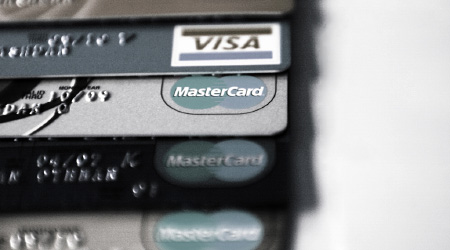What Is A Balance Transfer Rate?

The credit card industry is highly competitive and among the many incentives to attract and keep consumers is the act of conducting balance transfers. Offering cash back or airline mileage points are great incentives to attract new customers who are specifically looking for these types of programs. But many consumers don't have a need for niche programs and sometimes credit card companies have to offer tangible concrete savings in order to lure consumers and their existing balances away from a current long-term financial relationship. Many do this with incredibly low, albeit temporary, balance transfer interest rates.
A balance transfer is exactly as it sounds in that it means moving an existing credit card balance from one credit card to a second credit card. When conducting a balance transfer, there are three specific aspects to consider which may affect a consumer's decision whether to do it or not. The first is the duration of the transfer which can sometimes be as little as six months. If the promotional rate on the balance transfer is for a short period of time it may not be enough incentive to move. The second consideration is the temporary interest rate applied to the balance. Most balance transfers have a 0% transfer rate for the duration of the promotional period which will then revert to the standard rate. Some credit card companies however don't even do that and offer balance transfer rates of 3% to 5% limiting their usefulness. The third consideration is whether or not there is a balance transfer fee associated with the activity. For many years the balance transfer fee was either waived or was 1% to 2% of the balance transfer amount. However, recently the base balance transfer fee has been 4% for most national credit card companies making it quite expensive.
There are a few key considerations when considering a balance transfer as the rate can fluctuate based on user activity. Normally a promotional balance transfer rate only applies as long as the consumer is in good standing. This means that should the credit card holder make a late payment, miss a payment or go over the credit limit the balance transfer amount could go from the promotional rate to a higher standard or even punitive interest rate. If you always make your payments on time and for the correct amount then this shouldn't really be an issue. Another item to remember is that many credit cards will operate at different interest rates concurrently for different types of balances. If you transfer a balance with a 0% promotional interest rate for 12 months but use the credit card for additional purchases during that time then those purchases will be at the standard rate for the credit card. So it is possible for a consumer to run up thousands of dollars of additional debt on the transferred credit card and then when the promotional period is over wind up paying hundreds of dollars a month in interest on two balances.
The most common use of balance transfers it to consolidate debt from multiple high-interest rate credit cards to a single credit card with a low or 0% interest rate for 12 to 18 months. This can result in hundreds of dollars in interest savings while at the same time having the full amount of a monthly payment being applied to principle. This is a great way to pay down excessive amounts of debt quickly freeing up limited financial resources for things like emergency savings and retirement. When trying to understand what is a balance transfer rate it is important to remember that it is for a limited time and includes an additional fee. If the time provided is adequate and the fee is not cost prohibitive then utilizing a balance transfer with a low interest rate can make a lot of sense for most consumers.







